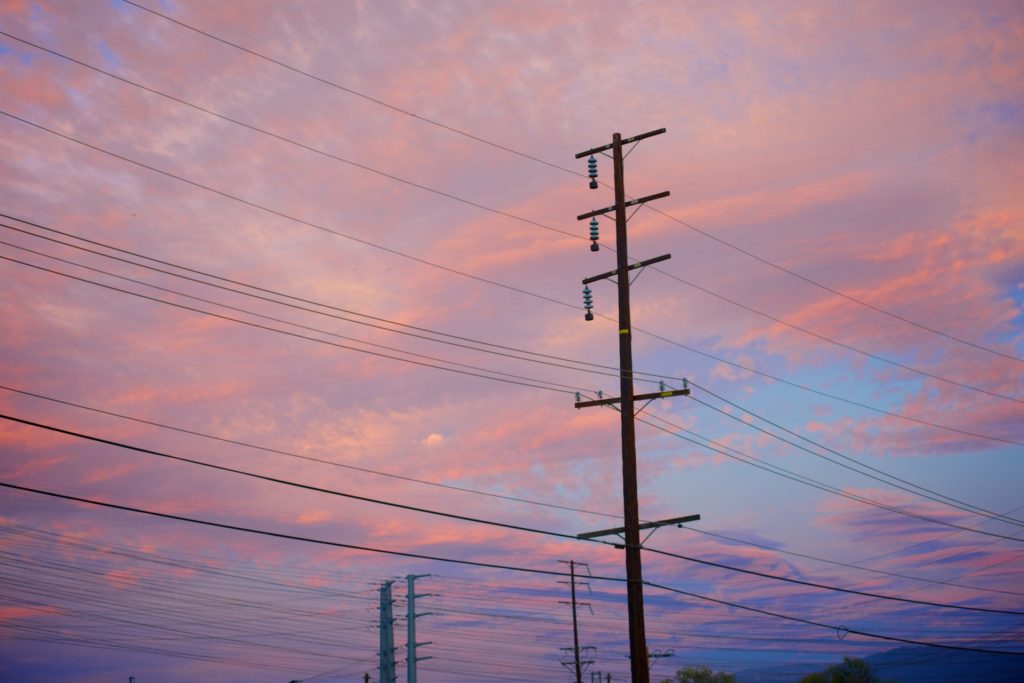Our family once knew a little girl whose eyesight was so bad that when she finally got glasses, and saw details clearly for the first time in her life, she asked her parents, “Why are there wires on the telephone poles?” Like millions of Americans, she had always seen the utility poles, but never really understood their purpose.
Oh, most Americans know the poles carry electric wires, of course, but do they really understand where the wires come from and where they go? Here is a simple test you can take yourself. You know there are wires coming into your home, bringing not only electricity for lighting and appliances, but also providing your access to the outside world – news, weather, sports, entertainment, and the Internet. But do you know exactly where those wires go from your home, and what is located at the other end?
For most Americans, the other end of the wires is many miles away, sometimes hundreds of miles. They originate at substations and power plants that many Americans are flatly opposed to. America is engaged in a generational debate about what’s at the other end – about whether we should even have power plants and the structures that bring that power to our homes.

For many, the debate is about the source of the power at the other end. Concern about climate change prompts many to want power not from traditional fuels, but from wind or solar sources. That is understandable, but whatever source is used, the electricity must still be transmitted to cities, homes, and businesses. That’s why our economy is connected by a vast network of pipes and wires. The “information superhighway” is a perfect description. Some highways are made from pavement, others from pipes and wires.
That reality raises the issue of infrastructure, which Congress is currently debating (actually that’s being generous, since there is more posturing than debating). The Biden plan includes tax incentives to build “at least 20 gigawatts of high-voltage capacity power lines.” As congressional stalemate already shows, such a plan will not be universally accepted, and certainly not by people who live anywhere near the proposed high-voltage powerlines. Such are the whims of public opinion.
The same is true of gas stations, where people are glad to fill their cars, but have little idea of how the fuel gets there from far-distant oil fields and refineries. A geologist named Bill Godsey recently published an op-ed piece in the Dallas Morning News titled “America needs more oil and gas pipelines.” He mentions three specific cases that show how inconsistent federal policy, and public opinion, can be when it comes to infrastructure.
First, the day he became President, Joe Biden cancelled the permit for the Keystone XL pipeline, which is intended to connect major oil fields in Canada to American refineries. Second, the same Administration allowed the Dakota Access Pipeline to remain operational, despite environmental lawsuits seeking to shut it down, and while additional environmental reviews are underway. That system links some of America’s most productive oil fields, in North Dakota, to a hub in Illinois, from which it is distributed nationwide, and to allies abroad. Third, Godsey mentions last month’s cyberattack on the Colonial Pipeline, which carries 3 million barrels of gasoline a day between Texas and New York, supplying much of the east coast.
Americans do not like waiting in line to buy $4-a-gallon gas, or seeing the local station closed. So, as Godsey reports, the Biden Administration may already be reconsidering its position on the vital role of pipelines and power lines, both crucial to a prosperous economy. Compared to the costs and dangers of truck or rail transportation, Energy Secretary Jennifer Granholm said in a recent press conference that “pipe is the best way to go.”
None of that changes the fact that Americans have a love-hate relationship with such infrastructure. We love the mobility of a free society with automobiles and good roads, we love it when a simple switch turns the lights on, and we can no longer live without Internet. But we hate construction, pipes, power lines, power plants, mines, and drill rigs. Renewable advocates find that many people also hate wind turbines and solar panels. The truth is that if you propose building anything, lots of people will be against it.
There would be less controversy if the structures were invisible, like telephone wires were to that little girl. But since infrastructure is not invisible, we ought to better educate people about why they need it.




Comments on this entry are closed.